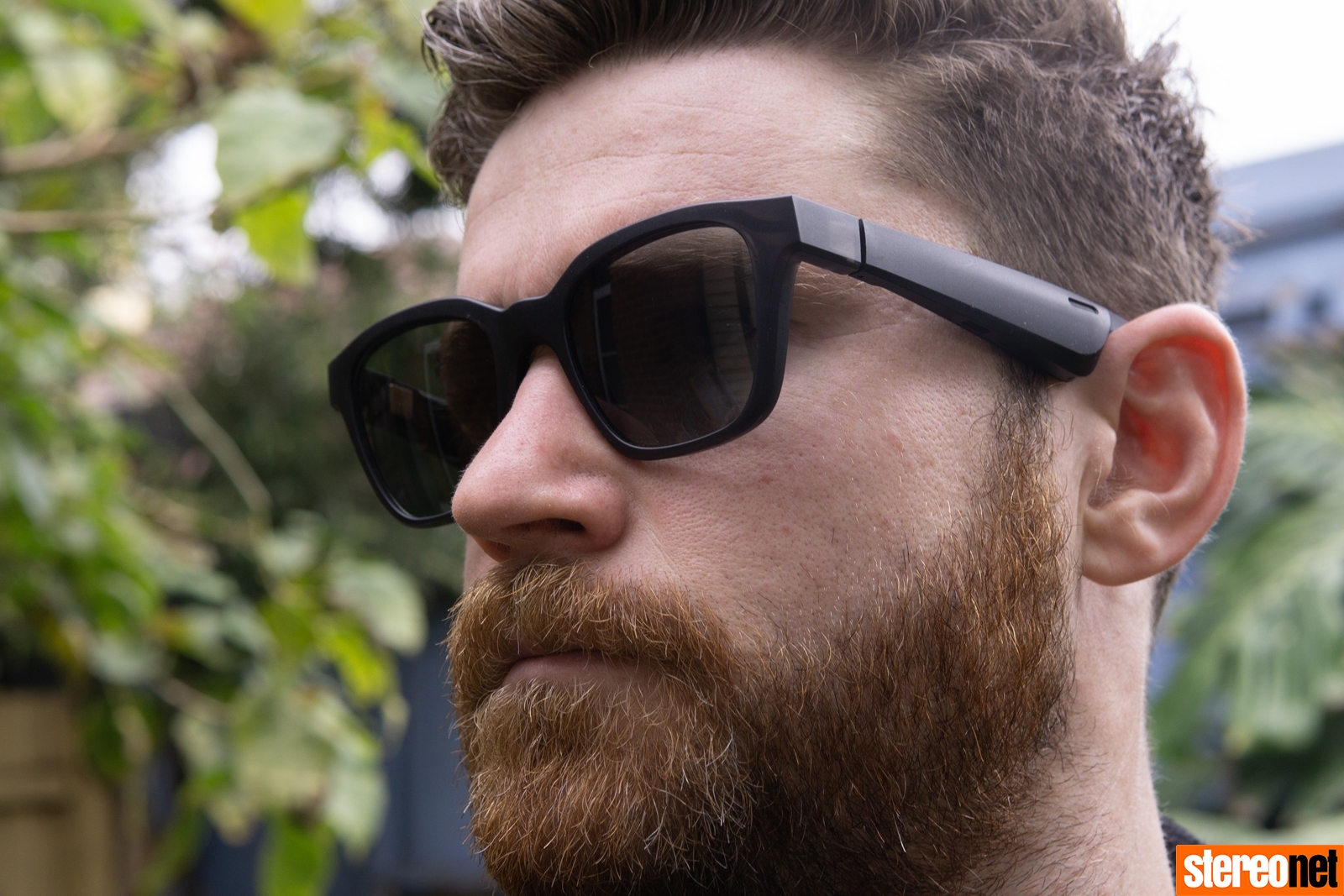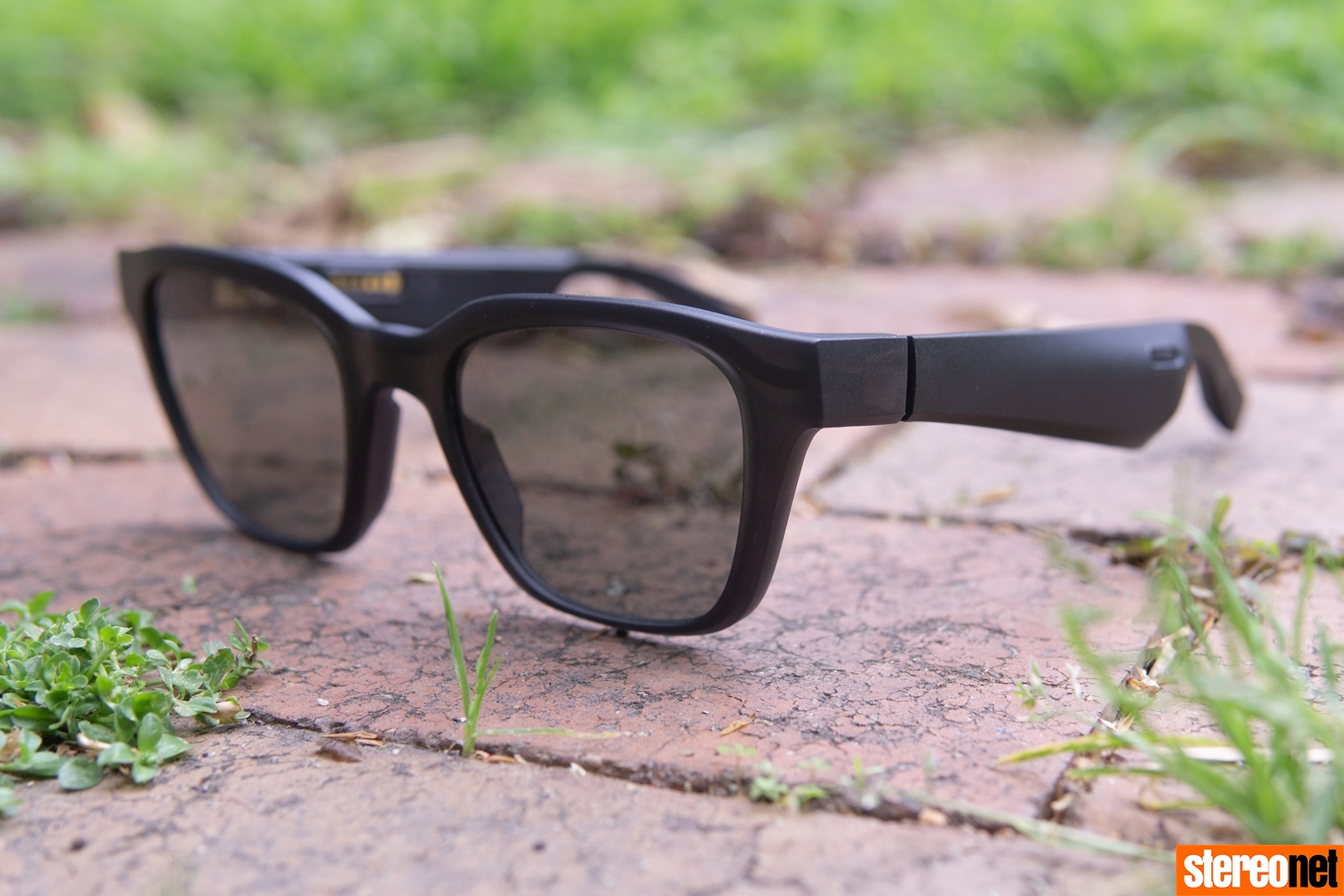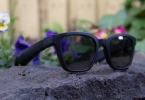Bose Frames Alto Audio Sunglasses Review

I love wearable tech. I especially love quirky wearables, so naturally, when Bose announced its Bose Frames Alto, Bluetooth sunglasses with speakers built-in, I was onboard.
Bose
Frames Alto
Audio Sunglasses
$299 RRP

Welcome to 2019, folks. It's a bold move from any audio or headphone company to produce a fashion wearable, but if anyone was going to do it, I'm glad it was Bose. Bose has the marketing muscle to make something like this seem cool, and with the Bose AR platform slowly coming to light with its existing headphone range, this feels like a perfect match for the company.
Coming in at $299 in Australia, will the Frames Alto be the wearable that has you throwing away both your earphones AND your sunglasses?
Outside
Taking obvious inspiration from the classic Ray-Ban Wayfarer, the Frames sport a very familiar design that at first glance, won't cause any confusion from anyone passing by.
That's until you take a closer look. The sturdy plastic arms of the sunglasses have smooth contoured bulges that conceal the gadgetry inside. These are punctuated with neat, tiny speaker grills on the underside and on the rear.
The curvy contour is neatly designed to let your ears sit directly in the firing line of the tiny speakers that are housed within, and also to position the microphone correctly for your voice.

The gold but subtle hinges connecting the arms to the rims look terrific. The rims are scratch-resistant and ever so slightly transparent. I didn't even pick up on the transparency until wearing them every day for three weeks.
All this gadgetry comes at a physical cost, however. The Frames Alto are quite big as a result. They look fine, even great on my big noggin, but on smaller heads, they are a tad bulky. Bose has an answer for this though as the Frames also come in a smaller, more rounded form factor, named “Rondo”. Both the Rondo and Alto frames only come in black.
The lenses aren't polarised but are 99% UVA/UVB protected. You can buy mirror polarised lenses for $50 from the Bose store, however. While the Bose lenses are easily swappable, sadly both neither the Alto or Rondo models support prescription lenses, which rules out a good chunk of the population as potential customers.
The Frames only have a weather protection rating of IPX2 which means they are not water or sweat resistant in the slightest, which is a shame. When it starts raining, it's time to take these off or they will be at risk of being damaged.

Yours truly!
Inside
Instead of the usual bone-conduction tech that you would typically expect to see on a product such as this, the Bose Frames contain brilliant little 16mm dynamic drivers instead.
There are also tiny little microphones for calls, too.
On the codec front, the Frames support AD2P/AAC, but there's no support for aptX, aptX LLC, or the newly announced Adaptive aptX.

Usage
Weighing only 45 grams, the Bose Frames Alto are physically big enough to remind you that you're wearing a technology-enabled device, but not too bulky to be a comfortable daily driver.
Despite the bulk, I've been able to wear these every single day for two weeks without any significant concerns or issues with the comfort, and surprisingly few comments from onlookers.
There is one button on the headphone, situated on the right arm. It's a tiny gold button, which is used for Google Assistant/Siri duties as well as taking/ending calls, and music functions.
The battery inside them is rated for 12 hours of standby time, and 3.5 hours of music time. I found this to be about right, and “talk-time” was around 3 hours as well.
The phone call quality is excellent, and these frames very quickly became my favourite hands-free device for calls. The only issue being the weird looks you get from strangers. After all, you are just a person wearing sunglasses… who on earth are you talking to?

This stealthy approach to audio is a double-edged sword in real-world use. I can get away with listening to music or podcasts in public without anyone knowing, but it also means people don't realise that I might not be able to hear them which can lead to a few awkward social encounters!
On the other hand, not having anything in my ears is a freedom that I've grown to love. When I'm on the phone, I have full use of both hands, and my ears are fully open and situationally aware.
The storage case is, unfortunately, a bit of a sore point. It's very large and rigid and doesn't have any charging functionality. Instead, charging duties are handled via a short USB cable which has a tiny magnetic latch that attaches to the inside of the frames. Hey Bose, let's go with USB type C next time just like your new 700 series headphones, please.
To turn the Frames off, you just place them upside down on a surface. Easy.

Using the app
The Bose Connect app is free on both Android and iOS platforms and contains settings for the Frames such as adjusting the standby timer, turning voice prompts on or off, and updating the firmware.
The app also contains some future promises about “Bose AR”, which is Bose's new foray into the world of software-driven augmented reality. The basic gist here is that when you're wearing the headphones, these apps will do things like identify nearby landmarks, tell you stories via sound, and even assist you on the golf course.
In reality, the current Bose AR offerings are promising but meagre and don't offer a lot more than some binaural recordings (some of which are admittedly not bad). I'm looking forward to seeing what Bose do with this space in the future.

Sound
I was sceptical when the Frames were ordered in for review. But straight off the bat, I will tell you that these sound far better than I expected.
The midrange response is full and blooming full of body, and the spatial separation between left and right channels is eerily wide. Pair this with the open and unhindered sensation of not having anything in your ears, and we're off to a promising start.
It's not all roses, however. The form factor gets a little in the way when it comes to bass, and no matter how much R&D you put into a product, you can't beat physics. Everything below 200Hz is challenging for the Bose Frames, and you would be better off sticking to less bass-heavy music for general listening.
There is a distinct Bose signature and quality to the upper midrange that lets vocals and strings poke through with an impressive amount of detail and texture that you wouldn't dare expect from a product of this form factor.
Phone calls function very well, but I often found myself pushing the volume to maximum to have a proper conversation with someone. Even then, you'll still be fighting with your environment to have 100% focus on your call. Hopefully, this could be improved with a future firmware update, but it could well be one of the physical limitations of this wearable release.
One amazing sensation is the isolation - or complete lack thereof. It's incredible to be able to listen to music, yet have entirely open-air around your ears. The downside became obvious though when listening in quieter public spaces, such as public transport. You'll need a certain level of volume to hear your music, and that level will be sure to get you funny looks from the neighbours.

Conclusion
As much as I would love to see some added weather protection and a USB type C port for the next revision of the Bose Frames, this is still a solid product with huge potential.
At $299 the Bose Frames Alto represents excellent value for money and is a strong first release from Bose in the audio and fashion wearable as a crossover product.
I could very easily work these into my daily routine without too much effort, and I love seeing boundaries being pushed in the “headphone” space.
For more information, visit Bose.
Matthew Jens
Constantly keeping himself busy, Matthew is a production manager, Brazilian jiu-jitsu blue belt, Head-Fi fanatic, coffee enthusiast and all-round cool Dad.
Posted in:Headphones Lifestyle Technology Assisted Hearing / Hearables Headphones Assisted Hearing / Hearables
Tags: bose frames audio sunglasses
JOIN IN THE DISCUSSION
Want to share your opinion or get advice from other enthusiasts? Then head into the Message Forums where thousands of other enthusiasts are communicating on a daily basis.
CLICK HERE FOR FREE MEMBERSHIP
Trending
applause awards
Each time StereoNET reviews a product, it is considered for an Applause Award. Winning one marks it out as a design of great quality and distinction – a special product in its class, on the grounds of either performance, value for money, or usually both.
Applause Awards are personally issued by StereoNET’s global Editor-in-Chief, David Price – who has over three decades of experience reviewing hi-fi products at the highest level – after consulting with our senior editorial team. They are not automatically given with all reviews, nor can manufacturers purchase them.
The StereoNET editorial team includes some of the world’s most experienced and respected hi-fi journalists with a vast wealth of knowledge. Some have edited popular English language hi-fi magazines, and others have been senior contributors to famous audio journals stretching back to the late 1970s. And we also employ professional IT and home theatre specialists who work at the cutting edge of today’s technology.
We believe that no other online hi-fi and home cinema resource offers such expert knowledge, so when StereoNET gives an Applause Award, it is a trustworthy hallmark of quality. Receiving such an award is the prerequisite to becoming eligible for our annual Product of the Year awards, awarded only to the finest designs in their respective categories. Buyers of hi-fi, home cinema, and headphones can be sure that a StereoNET Applause Award winner is worthy of your most serious attention.

















